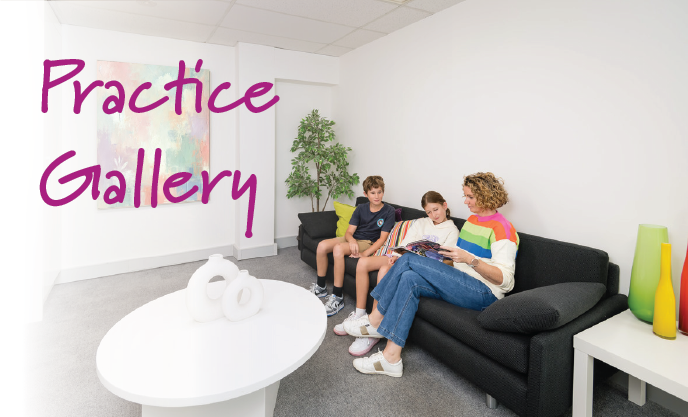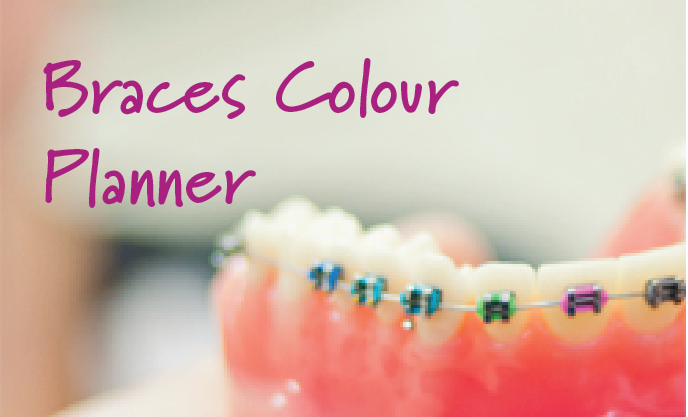FAQS
An orthodontist is an accredited dental specialist whose expertise is in growth function and facial aesthetics. They treat oral malocclusions (otherwise known as incorrect bites). These may be the result of irregular tooth position, muscle imbalances, or disproportionate jaws. An orthodontist can correct how your teeth and jaws function together, to give you a beautiful smile. Although all dentists can provide orthodontics, only a specialist orthodontist has undertaken three years of extra full-time training in orthodontics and dentofacial orthopaedics, to make them a true expert in diagnosing problems and creating great smiles. A qualified orthodontist must have:
- Completed a minimum of 5 years full-time Bachelor of Dentistry
- Completed a minimum of 2 years as a practising Dentist
- Completed a 3 years full-time Master in Orthodontics at an accredited University and
- Registered as a specialist in Orthodontics by the Dental Board of Australia. (If you are unsure if someone holds specialist qualifications these can be checked at http://www.ahpra.gov.au/Registration/Registers-of-Practitioners.aspx
A specialist orthodontist limits their practice to Orthodontic diagnosis and treatment ONLY and that’s why an orthodontist is the most qualified person to diagnose, prevent and treat any problems with the alignment of your teeth and jaws.
No, you don’t require a referral to see an orthodontist as the services are not covered by Medicare – so please contact us and make an appointment whenever you like!
We encourage you to bring your children in for orthodontic screening at around 7-8 years of age. This is because we can provide many early intervention treatments that can guide the growth of a young child’s teeth, and avoid the need for extensive orthodontics at an older age. This can result in shorter treatment times and reduced overall costs as well.
Not at all – everyone can benefit from orthodontics. There are absolutely no age limits on when we can move teeth and improve your smile.
Treatment quotes will be different for everyone, because the type of appliance you need, as well as the length of your treatment, will differ. These are the main contributing factors to the cost of treatment.
One of the aims of orthodontic treatment is to improve the position the teeth. As teeth move under gentle, biocompatible forces from your appliance the ligaments which hold the teeth in the jaws will be stretched or “exercised”. This means that initially the teeth feel tight but a few hours after the appliance is fitted this tight feeling turns to a general tenderness. This tender feeling last approximately 3-4 days and is relieved by over the counter medication such as Nurofen and Panadol. You will also avoid “exercising” your teeth by chewing hard things and limit your diet to softer foods until your teeth recover.
Our practice philosophy is directed towards early diagnosis and avoiding the extraction of teeth if at all possible. As Specialist Orthodontists we have a holistic approach to assessing and diagnosing malocclusions and suggesting the various treatment options using all of the scientifically proven appliances and techniques available. We assess not only the structures surrounding the teeth such as the gums and bone levels but also the effects of various treatments on the facial soft tissues and dentition as the patient matures and ages. We are all individuals and a product of lots of genetic input from both sides of a family and this is the reason that all treatment plans are tailored to the individual patient and a ‘One Size Fits All’ or ‘The Same Treatment Option For Every Patient’ is not a sensible approach. As Specialists we limit our practice to orthodontics only and as a result have extensive experience in applying the scientific research and our advanced training with all types of facial and dental features to formulate a thorough list of treatment options and appliances which are best for your needs. Based on this individualised approach some treatment options may include the extraction of teeth and this option is fully discussed with the rationale in conjunction with alternative treatment.
The maxilla (top jaw) is formed by 2 separate bones which fuse together after puberty. Up until this time the maxilla can be made wider to correct a size deficiency (crossbite) in the top jaw or to make extra space to accommodate the larger adult teeth. As specialists we are comfortable using expanders called Rapid Maxillary Expander (RME). This appliance (pictured) is cemented temporarily to your child’s top adult molar teeth which means that 1) expansion is achieved quickly- within 6 weeks 2) children become adapted very easily to the fitted plate and 3) they do not have to remove it for eating/sports and so cannot lose it! The parent/guardian is instructed on how to turn the expander using the key. Each turn very gently expands the maxilla by 0.25mm (a hair’s breadth) and so does not cause pain. Occasionally some children report a tingle or tickle under their nose after the first few turns. It is normal to notice a large gap appear towards the end of the turning phase and this indicates the space created in the top jaw. This gap slowly closes/reduces once turning has stopped. Dr Brennan will monitor your child and measure the degree of expansion. Once the desired width has been achieved the RME stays in place for up to 9 months to 1) allow new bone to fill in across the expanded areas 2) reduce the relapse of the widening and 3) remove the need for your child to wear a removable plate/retainer following the expansion phase.
Each RME is custom made for each child over a series of 3 appointments which are 1 week apart. No appointment is longer than 15 minutes which means they can be scheduled either before or after school.
- Appointment No 1- Spacers. I order to make a space between the back molar teeth in the top jaw where the RME will be glued separaters or spacers are squeezed between the teeth at the back of the top jaw. They are easy to put in but it is common for the pressure to cause tenderness as the back teeth move apart. This tenderness lasts approximately 2-3 days and is relieved by panadol or nurofen. Your child must brush as normal but avoid flossing in these areas and avoid sticky food. If you lose a spacer phone the practice to see if you need to have it replaced. We normally advise waiting until the day before Appointment 2 before having it replaced.
- Appointment 2- Sizing. This 15 minute appointment involves finding the correct size of molar rings to fit the top adult molars. An impression is taken of the rings and the size and shape of the palate and sent to the laboratory. The Orthodontic Technician customises the RME appliance to fit closely and comfortably to your child’s mouth. At the end of the sizing appoinmnet replacment spacers are placed to maintain the gap between the teeth.
- Appointment no 3- Fitting the RME. This is a painless appointment where the RME is checked for accuracy and glued onto your child’s top adult molars using a fluoride releasing orthodontic adhesive which protects the adult molars during treatment. Once the RME is cemented in place the the parent is shown how to turn. Start with the metal ‘key’ straight and insert into the hole in the middle of the expander and push gently back until the key can turn no further. Gently wiggle the key out without undoing the turn. This does not hurt your child and for the first few nights will be a little stressful for the parent as they become used to the technique. The RME is designed to be parent friendly- You cannot harm your child! The orthodontist will let you know how often to turn (usually every evening for between 4-6 weeks). Befoe you leave we will make another appointment to check progress. You can ALWAYS phone us in the meantime for advice or to answer any questions.
- Can not engage the key fully in the hole This happens when the last turn was not fully completed or if the key was moved backwards before being removed. You will need to come into the practice and have the hole repositioned. It does not cause any harm if you are unable to turn your RME until then.
- Teeth are sore Invariably the cause of sore teeth or gums when turning is a build up of bacteria around the gums. This can make the teeth and gums quite tender but is easily treated. Stop turning for a night/two and pay particular attention whilst brushing to the BACK MOLARS where the gums meet the silver rings. You may notice bleeding and this is a sign that you have found the troublesome spot. Adequate cleaning often requires parents to help. In general the RME is designed to be easy to maintain. If the pain persists please make an appointment to see us.
- Expander ring loose Occasionally the glue can become loose and the ring around the back molar tooth may lift up. If this happens then ask your child to open wide and using finger pressure guide the ring back down over the tooth and stay on soft food. Do not turn the RME. You will need to ring the practice to arrange an appointment to have the RME re-cemented.
- Difficulty swallowing and eating It is normal for your child to experience some difficulty swallowing and eating in the early stages following the fitting of the RME. Stick to soft, slightly sloppy food and gradually build up to food with a more solid consistency. There is huge variation in how quickly children adapt but for the majority normal diet is resumed within a week.
- Difficulty speaking clearly Again, initial difficulty speaking clearly is experienced by all children and most children adapt well and are comfortable speaking after the first week. Some children never fully transition but once the RME is removed clear speech is fully restored. It is important to encourage your child to talk and read out loud in the early days to help their tongue adjust to the appliance.
1. Sticky, chewy lollies 2. Sticky,chewy lollies! 3. Sticky, chewy lollies!!! Avoid things like Redskins, Fantails, Mentos, for example. It is also very important to limit the amount of sugar consumed and be especially mindful of the amount of sugar contained in fruit juices. If you are not eating a meal STICK TO PLAIN WATER. Sugar and bacteria combine to cause permanent brown/white scars on your teeth which never go away. This is called Decalcification and is completely avoidable if you maintain good brushing and a low sugar diet.
The mandible (lower jaw) is a single jaw bone, unlike the 2 part upper jaw, and as a result it cannot be made orthopaedically wider. Space can be maintained by utilising the disparity in sizes between the milk molar teeth and the adult premolars which follow them. You may not expect to learn that the adult premolar teeth are narrower than the milk molar teeth and the space created by the loss of the milk molar teeth is normally closed/lost by the back adult molar teeth drifting forward. In children who have significant crowding concerns in the lower jaw we recommend the placement of a temporary cemented holding plate called a Lower Lingual Arch (LLA). This plate is cemented onto the adult molar teeth using a fluoride releasing glue and prevents the adult molar teeth from drifting forward and this allows natural space (called the Leeway Space) to be maintained for use by the crowded teeth. It remains is placed BEFORE the loss of the milk molars and remains in place until the adult premolars have erupted and no space is left. It is important to refrain from eating sticky lollies whilst the plate is in the mouth as these will break the glue and cause the plate to become loose. Excellent tooth brushing is also required. The appointment sequence for the customisation of the LLA is exactly the same as for the upper jaw expander (RME)- see above.




